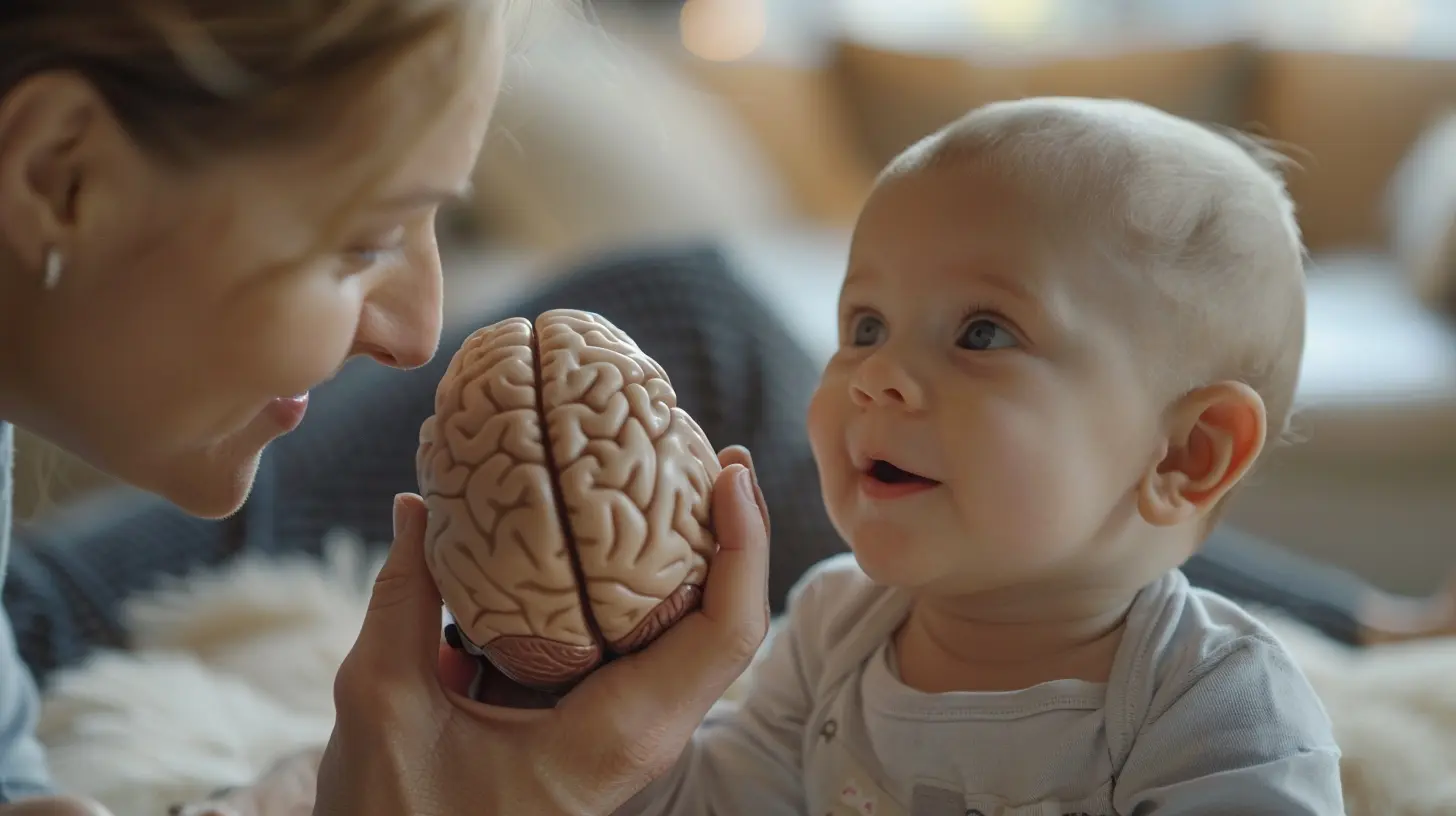7 April 2025
Parenting is an emotional rollercoaster filled with joy, challenges, and a never-ending quest to provide the best for our children. Among the many parenting styles out there, Attachment Parenting stands out as an approach that prioritizes deep emotional bonds between parents and their little ones. But what truly fosters this bond? Eye contact and presence are two powerful, yet often underrated, tools that play a critical role in a child’s emotional security.
In this article, we’ll dive deep into the significance of eye contact and presence in Attachment Parenting Theory, breaking down how these simple acts shape a child’s development, emotional well-being, and sense of security.

What is Attachment Parenting?
Before we explore the role of eye contact and presence, let's quickly define Attachment Parenting. This approach, popularized by pediatrician Dr. William Sears, is based on the idea that a strong emotional bond between parent and child leads to better emotional development, security, and confidence.Key principles of Attachment Parenting include:
- Responding sensitively to a baby's cues
- Breastfeeding and physical closeness
- Co-sleeping or room-sharing
- Using positive discipline
- Maintaining emotional availability
At the heart of it all is a child's need to feel seen, heard, and understood—which is exactly where eye contact and presence come into play. 
The Power of Eye Contact in Attachment Parenting
1. How Eye Contact Strengthens Emotional Security
Ever noticed how newborns lock eyes with their parents? This isn’t just a cute moment—it’s an instinctual survival mechanism. Babies are wired to seek connection, and eye contact is one of the first ways they experience love and security.When a parent consistently meets their baby’s gaze with warmth and attentiveness, it sends a strong message:
"You are safe. You are loved. You matter."
This consistent eye engagement strengthens neural pathways related to trust and emotional regulation. It's a non-verbal way of saying, "I'm here for you," fostering secure attachment—a foundation for healthy relationships later in life.
2. The Science Behind Eye Contact and Brain Development
Studies show that direct eye contact stimulates oxytocin production—the "love hormone" responsible for bonding and emotional stability.Additionally, when a baby makes eye contact, their brain receives sensory feedback vital for cognitive and social development. This helps them develop:
- Facial recognition skills
- Emotional intelligence
- Communication skills
In short, each glance isn’t just a moment—it’s a building block for a child’s ability to connect with the world.
3. Eye Contact and Emotional Regulation
Life is overwhelming for babies. They feel hunger, discomfort, and frustration, but they don’t understand these feelings. That’s where parents come in.When a child looks into their parent's eyes during distress, they find comfort and reassurance. A calm, reassuring gaze helps regulate their emotions, teaching them that big feelings are manageable. This is an early lesson in self-regulation, which becomes essential in adulthood.
On the other hand, lack of eye contact can leave a child feeling disconnected, which may lead to insecurity, anxiety, or difficulty trusting others. 
The Importance of Parental Presence in Attachment Parenting
Beyond eye contact, emotional presence is crucial. But presence isn’t just about being physically next to your child—it’s about being mentally and emotionally available.1. Quality Over Quantity: The Myth of Just "Being There"
Many parents struggle with guilt over not spending enough time with their children. But here’s the truth: It’s not about how much time you spend; it’s about how present you are in those moments.A distracted parent, constantly checking their phone or lost in their thoughts, isn’t emotionally available—even if they’re sitting right next to their child. Presence means putting distractions aside and engaging with your child fully.
- Listen to their babbling or stories.
- Respond with eye contact and warmth.
- Engage in playful interactions.
Even ten minutes of true presence beats hours of passive togetherness.
2. How Emotional Availability Shapes a Child’s Confidence
Children constantly seek validation from their caregivers. When a parent is emotionally present, they affirm their child’s feelings, thoughts, and experiences, which helps build:- Self-esteem
- Trust in relationships
- The ability to express emotions safely
But what happens when a parent is consistently emotionally absent? The child may struggle with self-worth, seeking external validation in unhealthy ways as they grow older. Emotional presence builds a foundation for lifelong emotional security.
3. The Role of Presence in Emotional Safety and Behavior
Children who feel emotionally secure behave better—not because they fear punishment, but because they feel understood. When parents are fully present:- Tantrums are managed more effectively (because the child feels heard).
- Children communicate emotions better (because they’ve experienced emotional attunement).
- Bonding moments increase, reinforcing long-term trust in the parent-child relationship.
If a child senses emotional distance, they may act out in a bid for attention or reassurance—not to be difficult, but to reconnect with their caregiver. 
Practical Ways to Strengthen Attachment Through Eye Contact and Presence
Now that we understand their importance, let’s explore simple, everyday ways to enhance eye contact and presence in parenting.1. Lock Eyes During Routine Interactions
- Look into your child's eyes while feeding them.- Make eye contact when saying “I love you” or offering comfort.
- Engage in "conversation eye contact" when they babble or talk.
2. Create Screen-Free Connection Time
- Dedicate at least 15-30 minutes a day to uninterrupted parent-child interaction.- Create “eye contact rituals”—such as bedtime cuddles with full, undivided attention.
- Put phones away during meals and playtime.
3. Use Play to Enhance Eye Contact and Presence
- Peekaboo and imitation games boost eye contact engagement.- Singing songs while looking into your child’s eyes strengthens the bond.
- Playing “mirror games” (where you copy your child’s expressions) reinforces emotional connection.
4. Practice Mindfulness in Parenting
- Be fully present in the moment when interacting with your child.- Practice active listening—truly hear and validate their thoughts, even if they’re small.
- Breathe and slow down, focusing on connection rather than multitasking.
Final Thoughts
Eye contact and presence aren’t just small gestures; they are the cornerstones of a secure, emotionally rich parent-child relationship. In Attachment Parenting, these moments shape a child’s emotional security, trust, and ability to form healthy relationships in the future.So next time your child looks into your eyes, pause and embrace the moment. They aren’t just looking at you—they’re seeking reassurance, love, and the comfort of knowing their world is safe in your presence.




Zephyris McKittrick
Eyes on, love strong! ❤️
April 16, 2025 at 3:52 PM